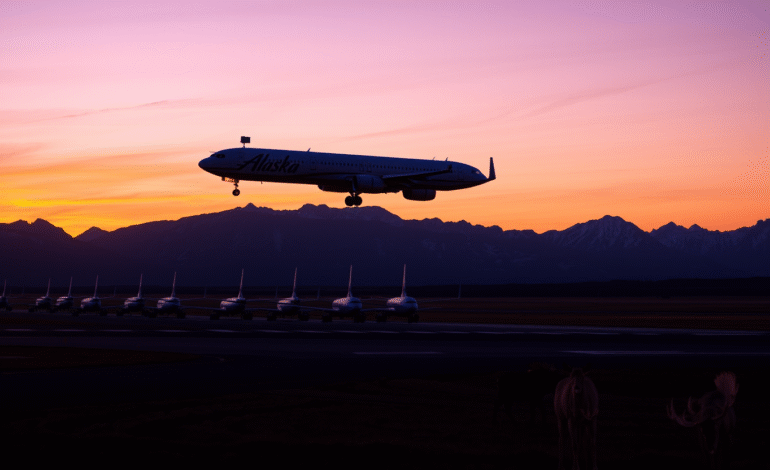Alaska Airlines Announces Starlink In-Flight Wi-Fi by 2026

Alaska Airlines is set to join the ranks of airlines offering free in-flight connectivity via SpaceX’s Starlink service, following in the footsteps of Hawaiian Airlines.
Alaska Airlines announced its plans on Wednesday, with Hawaiian Airlines already deploying Starlink from February 2024. Alaska is expected to commence offering Starlink connectivity with speeds up to 500Mbps in 2026 and aims to complete the rollout across all of its mainline and regional aircraft, as well as Hawaiian’s fleet, by 2027.
Ben Minicucci, CEO and president of Alaska Air Group, expressed pride at offering the fastest, most reliable in-flight internet in the skies, with gate-to-gate connectivity on nearly every aircraft across both airlines.
Starlink Wi-Fi, delivered via a constellation of over 8,000 satellites approximately 350 miles above earth, will be free on Alaska Airlines planes, as it is on every other airline offering Starlink broadband. Currently, Alaska charges $8 on most flights for in-flight internet access.
A separate press release announced T-Mobile’s sponsorship of this connectivity, specifying that passengers will need an account in Alaska’s yet-to-be-launched frequent-flyer program to enjoy the free in-flight Wi-Fi. Passengers will also experience ad-free Wi-Fi log-on for T-Mobile customers.
Non-T Mobile passengers can expect a similar experience to that offered by United Airlines on regional jets, where free Starlink access is granted after watching a few video ads. T-Mobile subscribers won’t need to provide their phone number for each flight to receive the free in-flight connectivity they already enjoy as a subscriber benefit.
Alaska Air Group did not specify which planes would receive Starlink first, but its Boeing 737-700 and Embraer E175 aircraft are most in need of an upgrade due to their current “Basic Wi-Fi” offering. Alaska’s oldest in-flight Wi-Fi service is provided via Gogo’s slow air-to-ground service, which the airline began adopting in 2010 and plans to discontinue early next year.
Alaska will become the third major US airline to adopt Starlink, following Hawaiian and United, with boutique air service JSX also offering Starlink. Meanwhile, Delta Air Lines, American Airlines, Southwest Airlines, and other domestic airlines continue to rely on Wi-Fi from satellites in geostationary Earth orbit.
Starlink has also secured the business of a growing number of international airlines, including plans for fleetwide deployments on multi-continent carriers like Air France, SAS, and Qatar Airways. Qatar Airways provided the longest Starlink experience so far in February, with average download speeds of 108Mbps, uploads of 30Mbps, and ping times of 74ms during a 12-hour flight from Washington to Doha.
In July, SpaceX announced that Starlink was now active on over 1,000 planes. However, it does face competition for low-Earth-orbit broadband, with Air Canada offering Wi-Fi via OneWeb’s smaller constellation and Amazon’s Project Kuiper securing a deal with Airbus to offer connectivity on its planes.
While Starlink is best known for its residential broadband services, it has faced some challenges recently, including a widespread outage in July and the introduction of a $1,000 “demand surcharge” and waiting lists of up to six weeks in parts of the Pacific Northwest.
SpaceX has also encountered less interest in its service among state broadband agencies despite the Trump administration’s initial support. Virginia and Louisiana recently completed their reviews and declined to allocate significant funds towards Starlink, with SpaceX criticizing these decisions as a “waste of federal taxpayer money” and decrying unnecessary spending.






